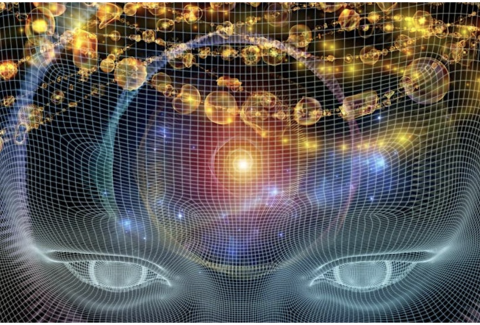Harnessing Contingency Management: Empowering Change Through Science and Strategy

Harnessing Contingency Management: Empowering Change Through Science and Strategy
In the realm of behavioral health interventions, Contingency Management (CM)[1] stands as a beacon of evidence-based practice, wielding the power of incentives to catalyze transformative behavior change. Rooted in behavioral principles and fortified by empirical data, CM offers a structured framework where positive reinforcement is meticulously aligned with desired behavioral goals. This approach not only enhances treatment outcomes but also embodies a profound synergy between science and compassion.
The Science Behind Contingency Management
At its core, CM leverages operant conditioning principles to reshape behaviors.[2] It operates on the premise that behaviors reinforced by immediate, tangible rewards are more likely to be repeated. This paradigm shift from punitive measures to positive reinforcement is not merely theoretical; it’s backed by substantial empirical evidence.
Studies consistently highlight CM’s efficacy across diverse populations and settings. For instance, research by Petry and colleagues (2004) demonstrated that CM effectively promotes abstinence from substance use, surpassing traditional methods in achieving sustained sobriety rates. This data-driven approach not only validates CM’s effectiveness but also underscores its adaptability in addressing complex behavioral challenges.[3]
Implementation Strategies: Turning Theory into Practice
Successful implementation of CM hinges on strategic deployment and meticulous planning. Key elements include:
- Targeted Goal Setting: Clear, measurable objectives are essential. Whether aiming to reduce substance use, promote medication adherence, or encourage healthy behaviors, defining precise targets enhances accountability and facilitates progress tracking.[4]
- Incentive Structure: Tailoring incentives to individual preferences and motivations optimizes engagement. From vouchers for sobriety milestones to privileges for adherence to treatment plans, incentives should resonate personally and symbolize tangible rewards for effort.[5]
- Monitoring and Feedback: Real-time feedback loops are critical. Regular assessments not only gauge progress but also offer opportunities for course correction and reinforcement adjustments based on evolving client needs and responses.[6]
- Integration with Therapeutic Alliance: CM thrives within a supportive therapeutic alliance. Collaborative partnerships between providers and clients foster trust, enhance motivation, and amplify the impact of positive reinforcement strategies.[7]
Transformative Impact and Future Directions
Beyond immediate behavioral changes, CM fosters a ripple effect of empowerment and self-efficacy. By nurturing intrinsic motivation and bolstering resilience, individuals not only achieve short-term goals but also cultivate enduring skills for lifelong well-being.
Looking ahead, the integration of technology and personalized approaches holds promise for advancing CM’s reach and impact. Innovations in digital health platforms, predictive analytics, and gamification offer exciting avenues to refine incentive structures and tailor interventions with unprecedented precision.
Conclusion: Shaping the Future of Behavioral Health
In conclusion, Contingency Management represents more than a strategy; it embodies a paradigm shift towards compassionate, evidence-based care. Grounded in science, fortified by data, and enriched by human connection, CM stands as a testament to the transformative potential of behavioral interventions.
As we continue to harness the power of incentives and refine implementation strategies, we propel towards a future where behavioral health is not just treated, but truly empowered. Together, let us embrace the science of change and pave the way for a healthier, more resilient society.
[1] Higgins, Stephen T., and Nancy M. Petry. “Contingency management.” Process-based CBT: The science and core clinical competencies of cognitive behavioral therapy (2018): 197-209.
[2] Zajac, Kristyn, Sheila M. Alessi, and Nancy M. Petry. “Contingency management approaches.” The Routledge handbook of philosophy and science of addiction. Routledge, 2018. 455-463
[3] Petry NM, Tedford J, Austin M, Nich C, Carroll KM, Rounsaville BJ. Prize reinforcement contingency management for treating cocaine users: how low can we go, and with whom? Addiction. 2004 Mar;99(3):349-60. doi: 10.1111/j.1360-0443.2003.00642.x. PMID: 14982548; PMCID: PMC3709247.
[4] Christensen, Darren R. “Contingency management literature review: Application to problem gambling counselling.” Gambling Research: Journal of the National Association for Gambling Studies (Australia) 25.1 (2013): 3-17.
[5] Benishek, Lois A., et al. “Prize‐based contingency management for the treatment of substance abusers: A meta‐analysis.” Addiction 109.9 (2014): 1426-1436.
[6] Schottenfeld, Richard S., et al. “Methadone versus buprenorphine with contingency management or performance feedback for cocaine and opioid dependence.” American Journal of Psychiatry 162.2 (2005): 340-349.
[7] Petry, Nancy M., Jeremiah Weinstock, and Sheila M. Alessi. “A randomized trial of contingency management delivered in the context of group counseling.” Journal of consulting and clinical psychology 79.5 (2011): 686.






